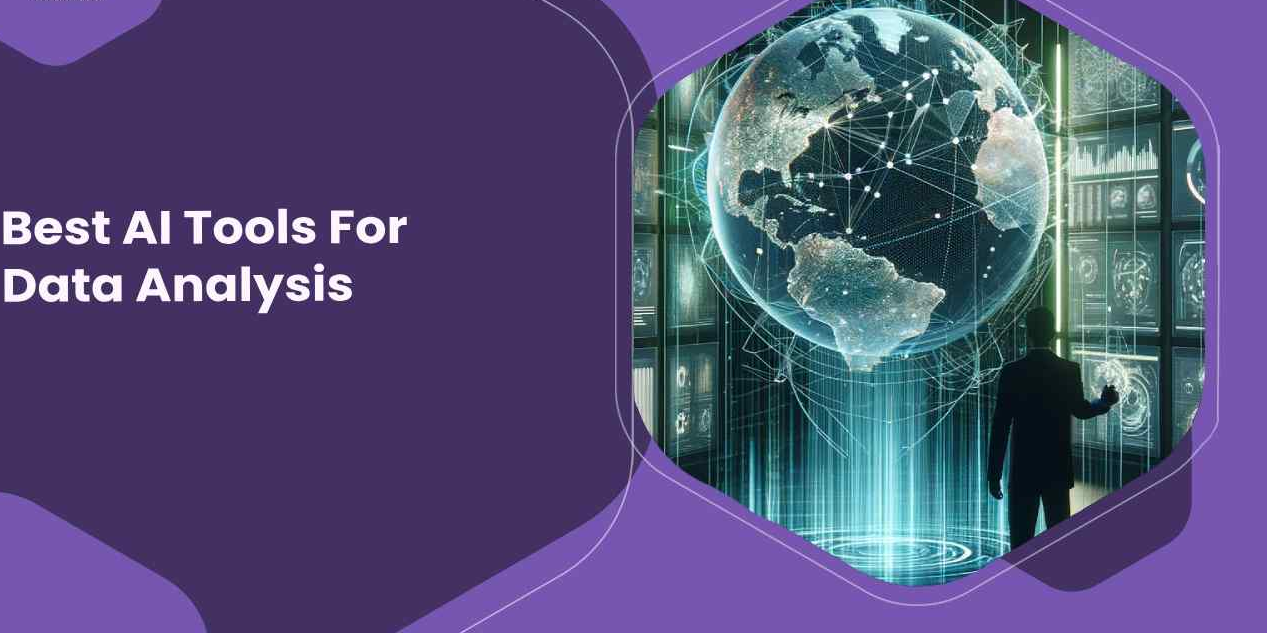In today’s fast-paced world, data is being generated at an unprecedented rate. Businesses and organizations are continually tasked with processing vast amounts of information to make informed decisions. Traditionally, this task required significant manual labor, with analysts spending hours (or even days) gathering, cleaning, and interpreting data. However, the emergence of Artificial Intelligence (AI) tools has revolutionized this process, making data analysis faster, more accurate, and more efficient than ever before.
In this article, we’ll explore how AI tools are transforming data analysis, how businesses can use them to make smarter decisions, and some of the leading AI tools that are helping professionals across industries leverage data more effectively.
1. The Role of AI in Data Analysis
Data analysis is the process of examining, cleaning, transforming, and interpreting data to find useful information and support decision-making. With the explosion of data in recent years, businesses are no longer able to rely solely on traditional methods to analyze data. AI tools bring advanced computational power and the ability to process massive amounts of data quickly and accurately, making them indispensable in modern data analysis.
AI algorithms are capable of learning from patterns in data and making predictions based on historical trends. This means businesses can not only analyze past performance but also predict future outcomes—leading to better-informed decisions. Moreover, AI can automate routine tasks, such as data cleaning and reporting, freeing up analysts to focus on higher-level strategic work.
2. Key Benefits of Using AI Tools for Data Analysis
a. Faster Data Processing and Analysis
AI can process and analyze data in a fraction of the time it would take a human analyst. This speed enables organizations to make quicker decisions, which is critical in industries where time is of the essence, such as finance or healthcare.
b. Enhanced Accuracy and Reduced Human Error
Manual data analysis is prone to errors due to human oversight or misinterpretation of complex data sets. AI tools, however, are designed to process data with high precision and can detect subtle patterns or anomalies that humans might miss.
c. Predictive Analytics
One of the most powerful capabilities of AI in data analysis is predictive analytics. AI tools can analyze historical data and create models to predict future trends. For example, a retail company can use AI to forecast demand for a particular product based on past sales data, allowing them to optimize inventory management.
d. Data Visualization
AI tools often come with robust data visualization features, helping to transform complex data sets into intuitive charts, graphs, and dashboards. This makes it easier for decision-makers to digest information and make sense of the data at a glance.
3. How AI Tools Improve Decision-Making
AI tools support decision-making in a variety of ways, from identifying key trends to automating routine decisions. Here’s how they can enhance business intelligence:
a. Identifying Hidden Insights
AI algorithms can sift through enormous volumes of data to uncover trends and relationships that may not be immediately apparent. This allows organizations to make decisions based on deeper insights rather than gut feelings or assumptions.
b. Real-Time Decision Support
In industries like finance or e-commerce, AI tools can provide real-time analysis of data to inform immediate decisions. For example, AI-driven algorithms can monitor financial markets in real time and recommend investment decisions based on market shifts.
c. Data-Driven Forecasting
By analyzing patterns in historical data, AI can make highly accurate predictions about future events. For example, AI can forecast consumer behavior, inventory needs, or even employee performance, allowing businesses to adjust strategies accordingly.
d. Minimizing Bias
Humans are often influenced by unconscious biases when making decisions. AI tools, however, are designed to make decisions based solely on data and algorithms, reducing the impact of human bias in important decisions.
4. Popular AI Tools for Data Analysis
Now that we’ve explored the benefits, let’s look at some of the leading AI tools that are transforming data analysis across industries.
a. Microsoft Power BI
Microsoft Power BI is a powerful business analytics tool that allows users to visualize data, share insights, and collaborate across organizations. It uses AI-powered features like quick insights, which automatically surface patterns and trends within your data, helping users make decisions faster.
- Key Features:
- Easy-to-use data visualization and dashboard features
- AI-powered quick insights and natural language querying
- Integration with a wide range of data sources (Excel, Azure, Google Analytics, etc.)
b. Tableau
Tableau is another popular data visualization tool that leverages AI to help businesses analyze large datasets. The tool’s AI-powered feature, “Explain Data,” allows users to automatically generate explanations for unexpected changes in data, which can lead to faster insights and decision-making.
- Key Features:
- Advanced data visualization and interactive dashboards
- AI-powered data exploration capabilities
- Strong integration with various data sources
c. BigML
BigML is an AI-driven platform for machine learning and predictive analytics. It allows users to create predictive models without needing advanced knowledge of coding or machine learning. BigML is ideal for businesses looking to predict customer behavior, sales trends, and other important metrics.
- Key Features:
- Easy-to-use machine learning models and predictive analytics
- Automated data preprocessing
- Visual model-building interface for non-technical users
d. IBM Watson Analytics
IBM Watson Analytics is a cloud-based AI tool that helps businesses with data exploration, predictive analytics, and automated data preparation. It uses natural language processing to allow users to ask questions in plain English, and it will generate insights from the data in response.
- Key Features:
- Natural language querying and reporting
- Predictive and descriptive analytics
- Easy integration with multiple data sources
e. RapidMiner
RapidMiner is a data science platform that provides a suite of AI tools for data preparation, machine learning, and predictive analytics. It’s designed for both data scientists and business analysts and can help automate complex data workflows.
- Key Features:
- Advanced machine learning and statistical analysis tools
- Visual interface for building data workflows
- Supports both structured and unstructured data
5. The Future of AI in Data Analysis
The future of AI in data analysis looks incredibly promising. As AI continues to evolve, we can expect even more advanced predictive models, improved natural language processing for querying, and greater automation of complex tasks. The integration of AI with other technologies, like the Internet of Things (IoT) and blockchain, will further enhance the power of data analysis and decision-making.
For businesses, the key will be to stay ahead of these developments by continuously adopting and adapting AI tools to ensure smarter, data-driven decisions. Those who embrace AI-driven data analysis today will be better positioned for success in the data-driven world of tomorrow.
Conclusion
AI tools for data analysis are no longer just a luxury; they are an essential part of any business looking to make smarter, faster decisions. From real-time data processing to predictive analytics, AI is empowering organizations to analyze data more effectively, reduce errors, and gain deeper insights. With the growing number of AI tools available, businesses of all sizes can take advantage of these capabilities to stay competitive and drive success in their industries.
By leveraging the power of AI, businesses can make data-driven decisions with greater speed, accuracy, and confidence than ever before. Whether you’re a data scientist, analyst, or decision-maker, embracing AI for data analysis will undoubtedly put you on the path to smarter, more informed choices.

